Help Support Fergie & her fillies with humane fertility control!
The following is from the American Wild Horse Campaign:
|
The following is from the American Wild Horse Campaign:
|
The following is from the American Wild Horse Campaign:
Federal helicopter roundups have paused for the next few weeks. Before they resume in September, it’s important to take a moment and reflect on the staggering cost of freedom lost so far for America’s wild horses and burros. But first, will you chip in to help fund our efforts to document and shine a light on the cruel reality our beloved wild horses and burros face at the hands of the government?
| CHIP IN TO PROTECT WILD HORSES |
Since July 1, 2024, 6,629 wild horses and burros, many of whom are young foals, have been captured as a result of seven dangerous roundup operations conducted by the Bureau of Land Management (BLM). So far, 89 deaths have been reported.
Most recently, roundups in the Sulphur, Marietta and South Steens Herd Management Areas (HMAs) have concluded. During these three roundups alone, 1,612 horses and burros were captured and 19 animals lost their lives. In the South Steens, where 9 horses died of traumatic injuries or were euthanized by the BLM, the agency actually increased its capture goal by 120 horses on the last day of the roundup.
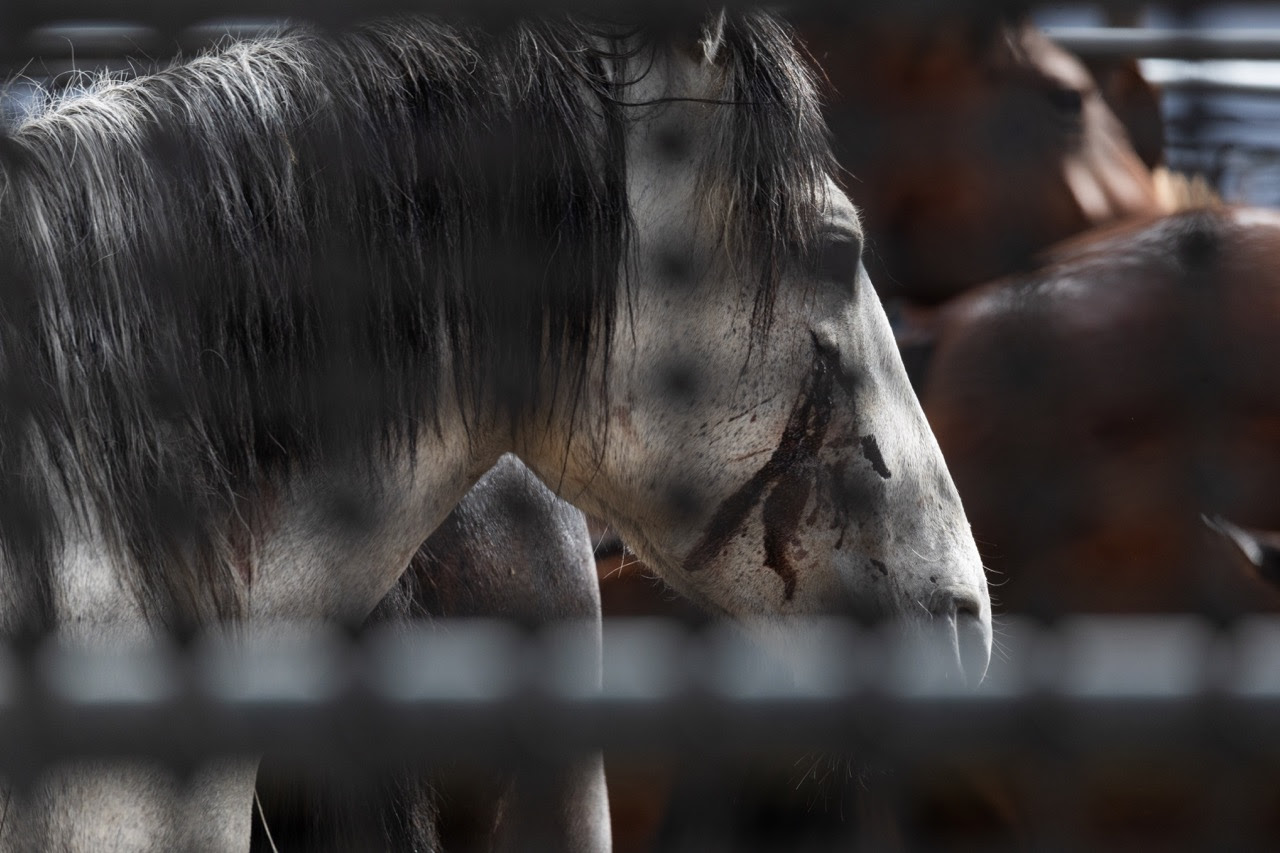
| CHIP IN TO PROTECT WILD HORSES |
During the Blue Wing roundup 1,655 wild horses and burros were captured and a shocking 42 died. This helicopter operation was particularly gruesome as AWHC field observers documented shocking abuse during it, including capturing video footage of a collapsed horse being struck repeatedly in the head by BLM contractors. And in Wyoming’s North Lander roundup, a staggering 2,577 wild horses were captured, including 471 foals.
This has to stop. Over the course of the next month, over 1,000 more wild horses and burros are slated for removal. That means more horses and burros terrorized, more families broken apart, more life-threatening injuries, and more deaths
| CHIP IN TO PROTECT WILD HORSES |
Not only is this cruel and unscientific system costing these animals their lives and their freedom, it’s also costing taxpayers hundreds of millions of dollars each year. According to the BLM, the Wild Horse and Burro Program cost taxpayers $157.8 million in Fiscal Year 2023. For the Blue Wing Complex roundup alone, the contractor hired to conduct the brutal operation was paid $624,870.
We know there’s a better way. We’re proving just that through our successful and scientifically-backed PZP fertility control program, which only costs $30 per vaccine, and our groundbreaking Land Conservancy Project. These innovative AWHC programs show that there’s a more humane and cost-effect alternative to protect and conserve our nation’s wild horses and burros and the land they roam other than cruel and costly helicopter roundups.
We’re also fighting to hold the BLM accountable for abuses against wild horses and burros by deploying our humane observers to every single planned helicopter roundup of the summer so far to ensure the public knows what is happening to these iconic animals.
It’s up to us to continue fighting for the future of our wild herds, but we can’t do it alone. Your support is critical to powering this vital work. And by signing up for a recurring monthly gift, you can help us do even MORE to keep wild horses and burros free on the lands they call home year-round. Will you take your support to the next level and become an AWHC recurring donor today?
| BECOME A RECURRING DONOR |
Thank you,
Team AWHC

The following is from All About Equine Rescue:
Boots & Bling is an evening of family fun features a delicious BBQ dinner catered by award winning Cowabunga BBQ, auctions, contests & prizes, dancing, and more. All to help horses-in-need!
This event has sold out since 2017! What are you waiting for? Get your tickets now!


Fan favorite Justin Trick of Trick Auctioneers is returning this year to emcee the night alongside Tamara Berg of KCRA.
This year’s event is extra special because we are celebrating 15 successful years of working on the frontlines of equine rescue together! To commemorate this milestone, there will be some fun contests and prizes. There will also be auctions with some amazing items and scrumptious desserts, dancing, and more that you won’t want to miss!




Boots & Bling is AAE’s most important fundraising event of the year. The horses are counting on you to be there!
| Get Your Ticket! |
Once on the event website, click on the red “Donate & Tickets” button to purchase your tickets.
Coming with friends? Purchase tickets for your group in one transaction.


There is still time to become a sponsor for Boots & Bling!
Sponsorship opportunities, from private family tables to exclusive business/corporate packages (and everything in between), range from $650 to $7500. Sponsor tables seat 12.
Sponsor packages are designed to provide branding exposure at Boots and Bling, through advertising and public relations, as well as potential exposure at the ranch in Pilot Hill and the tack store in Shingle Springs.
Click here to learn more about sponsorships options.
Contact our event team bootsnbling@allaboutequine.org to develop a package just for you that would be most beneficial to your business.
Thank you to the Boots & Bling 2024 Sponsors!





The following is from All About Equine Rescue:


Lola Found Her Home, Sweet, Home!
More Adoptable Horses
Get Your Tickets to Boots & Bling
Volunteer Corner, Volunteer Needs
Other Ways to Help
AAE Friends, Supporters, & Service Providers


We are thrilled to announce that our Lola, L-O-L-A, Lola recently went to her forever! We’re so excited for what the future holds for her!


Lola came to AAE with her friend, Liza, at the beginning of the year in collaboration with another rescue organization. The pair had been with a foster who didn’t have adequate facilities for gentling mustangs. These girls were unhandled/unhalterable, and, as a result, they hadn’t had any dental or hoof care, vaccines, or deworming.


During our time with us, Lola made great progress. She became halterable, and she was willing to learn. She furthered her education as a participant in the Monty Roberts International Learning Center’s 15-day Advance Course of Horsemanship in the spring.
It wasn’t long before Lola met her perfect match in Mel! Mel is a previous AAE adopter, and we are grateful she opened her heart and home to another beautiful sweetheart. We can’t wait to hear more about Lola and Mel’s adventures!


We couldn’t be happier for this cute duo!
The following is from the American Wild Horse Campaign:
We are fiercely committed to safeguarding America’s iconic wild horses and burros. Many times, our promise to protect our wild herds requires activating the AWHC Rescue Fund at a moment’s notice. The Rescue Fund enables our team to provide vital support to on the ground rescues by funding hay and feed, transport to safety, and critical veterinary care. Before the end of this month, we hope to raise $10,000 to replenish our Rescue Fund so we can be prepared to step up at a moment’s notice. Will you chip in to help us reach our goal?
| REFUEL OUR RESCUE FUND |
As we speak, the Bureau of Land Management (BLM)’s summer roundup campagin is continuing across Western states. These cruel and costly helicopter operations endanger the lives of wild horses, and lead to capture, confinement, and sometimes slaughter. Our Rescue Fund has been pivotal in rescuing hundreds of wild horses and burros in need of help.
Now we’re aiming to raise $10,000 to ensure our vital rescue operations can continue. These funds will support local rescue organizations that are saving mustangs and burros from imminent danger.
Thanks to the incredible generosity of supporters like you, the Rescue Fund has already saved hundreds of wild horses and burros, including victims of the BLM’s Adoption Incentive Program (AIP). This program has created a pipeline to slaughter by awarding $1,000 to adopters per horse or burro adopted. Then irresponsible adopters are pocket the cash and dump their adopted animlas in slaughter auctions across the country.
We’re fighting back against the BLM’s inhumane management practices, including the AIP, but we need to be ready to help mustangs and burros in need.
| REFUEL OUR RESCUE FUND |
Thank you for standing with us in this vital cause. Together, we can ensure these magnificent animals remain free and wild, just as nature intended.
Onward,
Team AWHC
The following is from the American Wild Horse Campaign:
Many of you have been following our Land Conservancy Project, the bold initiative we pioneered last year. This program aims to perserve and enhance key habitats so our iconic wild herds can live wild and free in ecological balance in America’s western landscapes. Click here to support our Land Conservancy Project!!
| FUEL THE LAND CONSERVANCY PROJECT |
Our Land Conservancy Project is focused on three critical areas: land acquisition, habitat restoration, and humane management.
For context, the Bureau of Land Management’s (BLM) own range data indicates that private livestock overgrazing, along with fire and drought, have depleted habitats for all wildlife, including protected species like wild horses and burros.
This preventable habitat deterioration is one reason we took a huge step forward last year by acquiring 3,300 acres of prime habitat within Nevada’s picturesque Carson Valley. The land supports a diverse array of wildlife including the federally protected Fish Springs wild horse herd. We aim to use this innovative project to help set a new conservation standard for wild horse and burro protection. Our dedicated land manager, along with a team of passionate experts, is working on the ground, actively tracking wild horse movements, studying the intricacies of the land, and undertaking vital habitat restoration projects.


Photo of a Fish Springs foal by John T. Humphrey
We’ve spent the past year compiling photo evidence and scientific insights into how wild horses and local wildlife peacefully coexist, sharing the resources this land provides.


Photo taken on AWHC land by John T. Humphrey


Photo taken on AWHC land by John T. Humphrey
AWHC has a strong track record of protecting not only wild horses, but also the land they roam. Our Land Conservancy Project aims to build on this strong record by working to restore meadows, protect creeks and springheads to provide life-sustaining access to water, and reseed areas with native grasses to ensure that wild horses and other wildlife have the resources they need to thrive.
AWHC is proud to have embarked on this groundbreaking — or ground healing — project.
| FUEL THE LAND CONSERVANCY PROJECT |
Stay tuned for future updates on the program’s progress and the advancements this program allows us to make. And as always, thank you for standing up for American wild herds!
Onward,
Team AWHC
The following is from the American Wild Horse Campaign:
Within the last few days, the Bureau of Land Management (BLM) began a series of wild horse and burro helicopter roundups as it continues its summer roundup campaign, aiming to remove over 7,000 federally protected animals.


Photo of the White Mountain Herd by Nenah Demunster
| PROTECT OUR WILD HERDS |
Wyoming’s White Mountain roundup began on August 15th. Our on-the-ground observer visited the White Mountain herd in the few days before the helicopters took off. She documented the beautiful mustang families living wild and free in the Herd Management Area (HMA), and who were unaware that in mere days, nearly 600 would be ripped from the only homes they’d ever known.
Tragically, almost every horse she saw in those last moments of freedom has now been captured. The south side of the HMA has been scraped clean. Every single band that has been known and documented for years has been permanently removed, every familiar face is gone. Now 536 wild horses have lost their freedom and 10 have lost their lives.
Oregon’s South Steens roundup began the same day. The BLM aims to capture 760 wild horses. So far, 574 animals have been rounded up and eight have died.
On August 18th, the Marietta Wild Burro Range helicopter roundup began as well. This Range is the nation’s first formally recognized range managed principally for wild burros and is home to an estimated population of 387 burros. This roundup will reduce the population by a staggering 75%.


| PROTECT OUR WILD HERDS |
These operations endanger the well-being of these innocent animals as well as the long-term viability of their herds. These cruel roundups often leave wild horses and burros traumatized. Young foals are separated from their mothers, horses and burros are often run to exhaustion, injuries are commonplace, and sometimes lives are tragically lost.
AWHC is on the ground at these roundups, in remote corners of the West, bringing firsthand reports from the frontlines of these roundups to share the stories of these wild horses. By raising awareness, we can drive change, and our observation program is the cornerstone of educating the public about the plight of our wild horses and burros.
As the BLM pushes ahead with these upcoming roundups, we’re preparing to deploy more observers to the field – but we need your support to ensure that they have the resources they need to continue this work. These iconic animals are counting on us to shine a light on the harsh reality of federal helicopter roundups. Can you chip in whatever you can afford to support our Observation Program today?
| DONATE |
Thank you,
Team AWHC
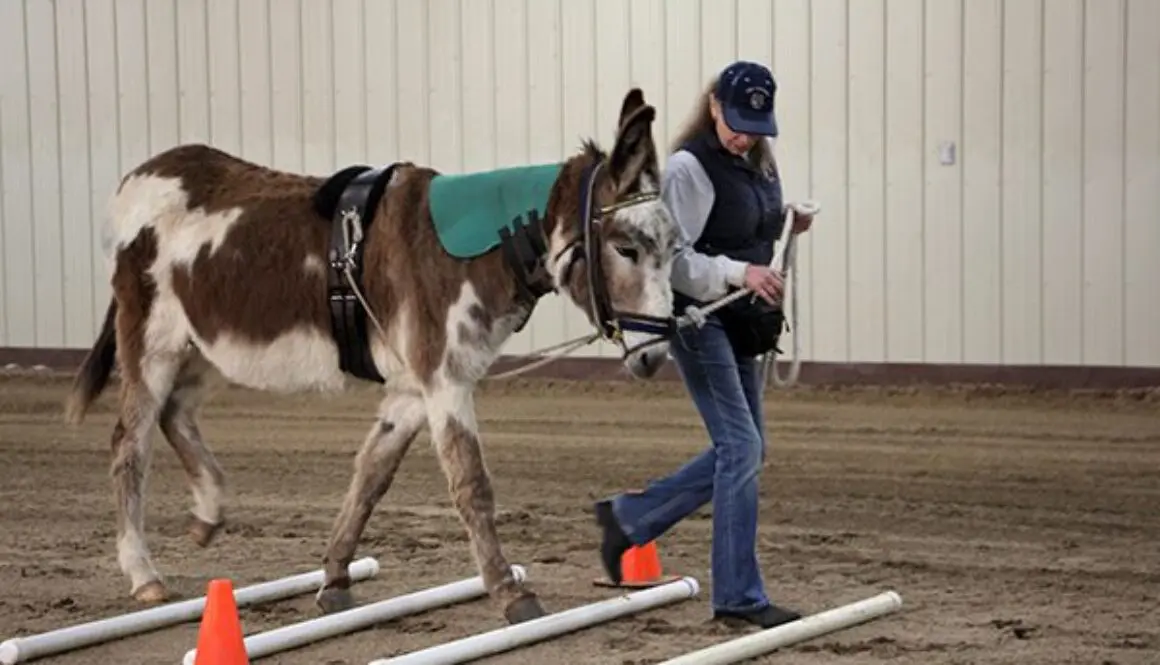
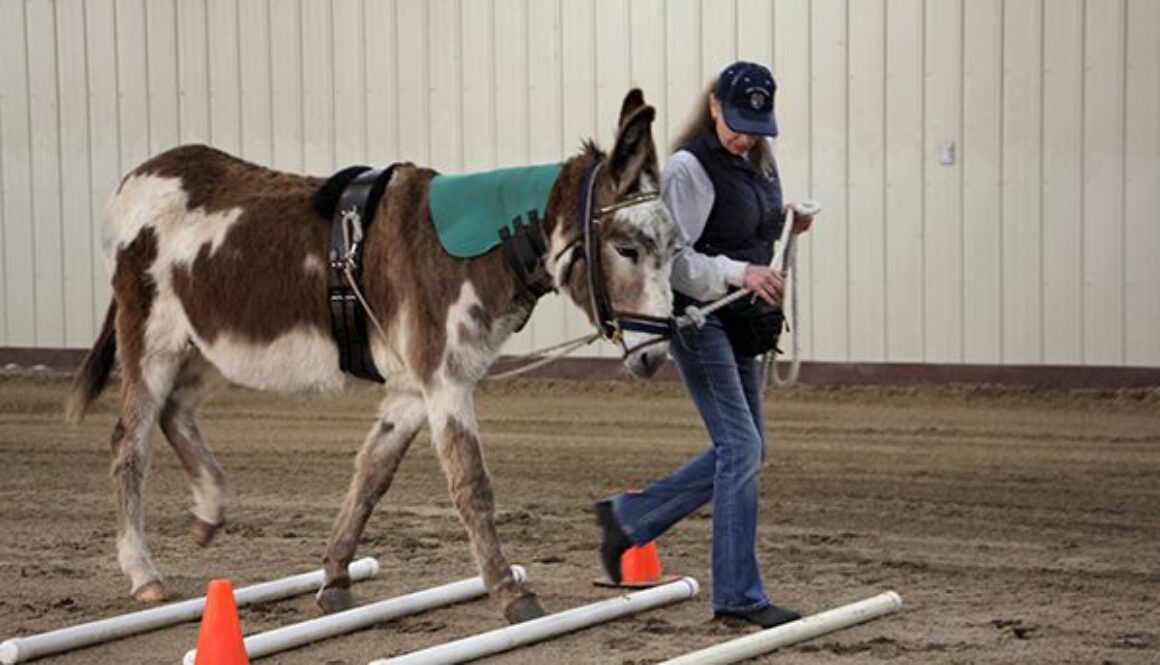
4-1-20: I led Chasity from the stall and introduced her to her new work station. It was clear that there would be a lot of work ahead. Her neck crest was fallen to one side, but was not yet permanently broken, as far as I could tell. She had fat pockets across her body and her hooves were overgrown with shoes on the front feet. At least her feet could be balanced after removing her shoes and having her trimmed. For now, I would introduce Chasity to her new routine of grooming and exercise.

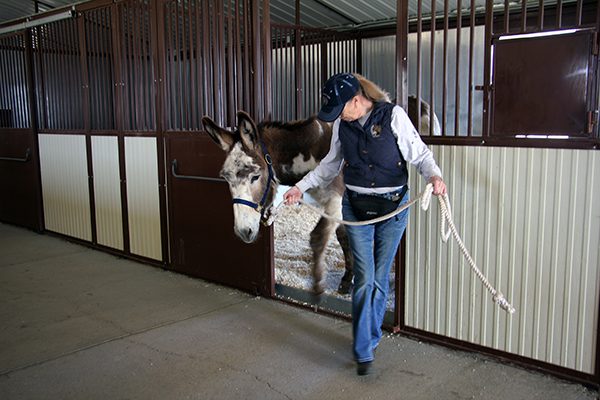
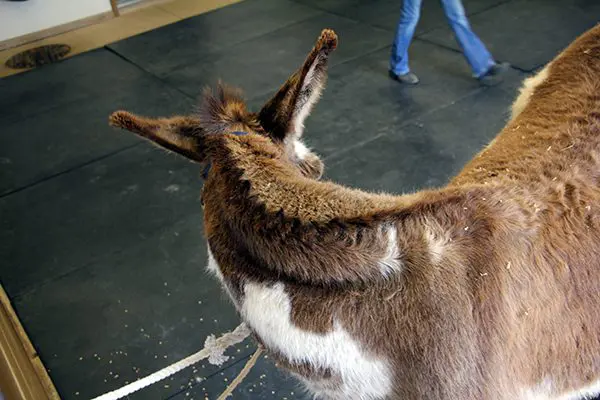
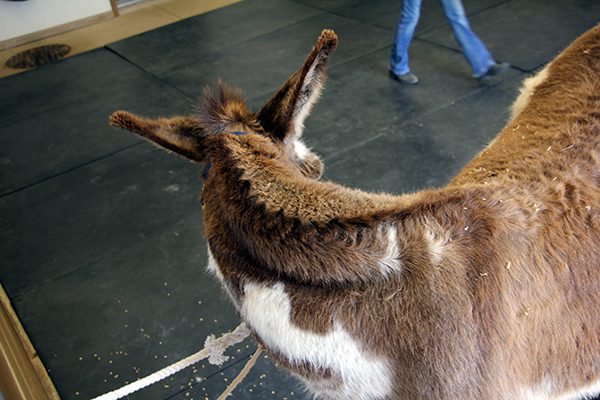
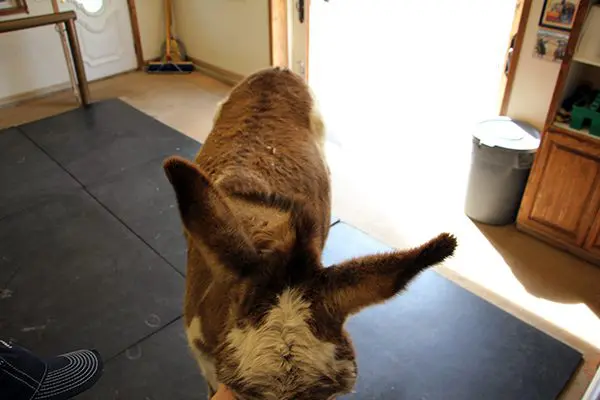
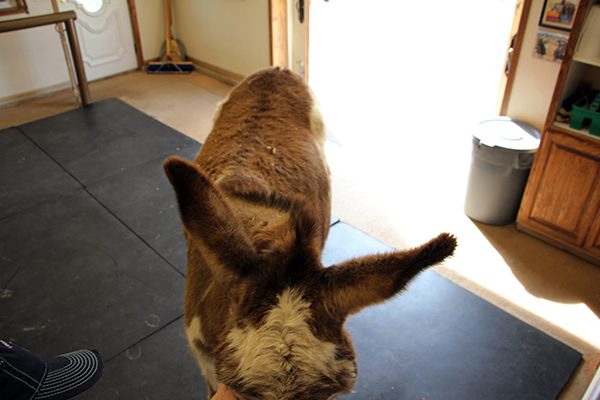
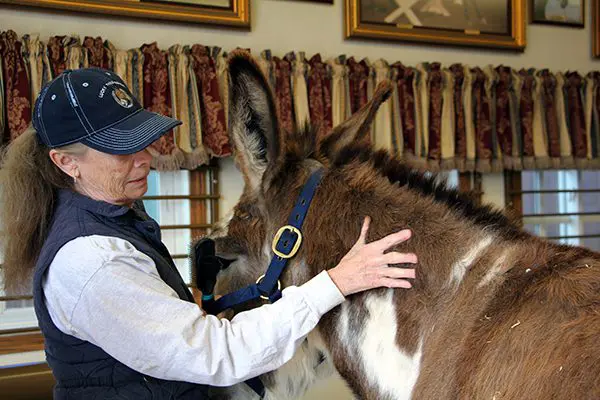
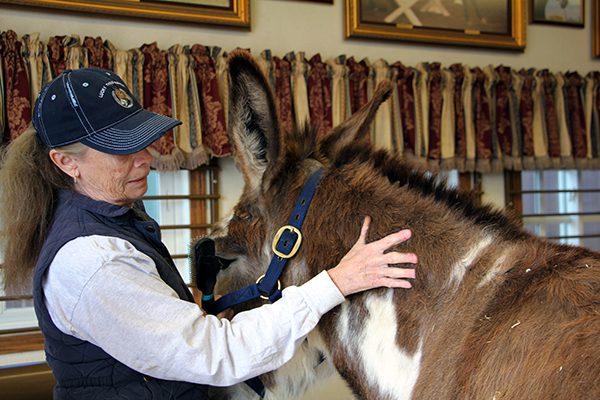
Since I wanted a clean place to set the crownpiece of the bridle without it getting tangled in her hair, I went ahead and clipped her bridle path. She was very good about having the clippers behind her ears.
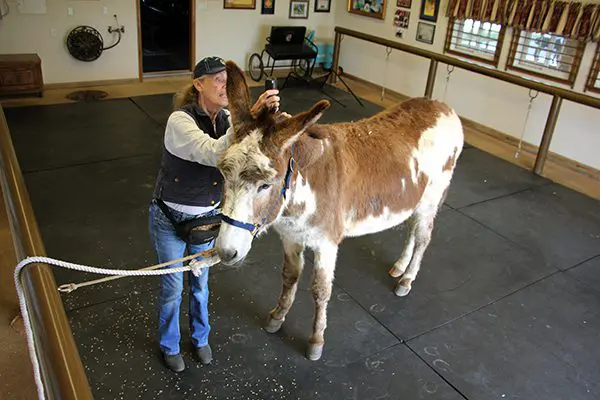
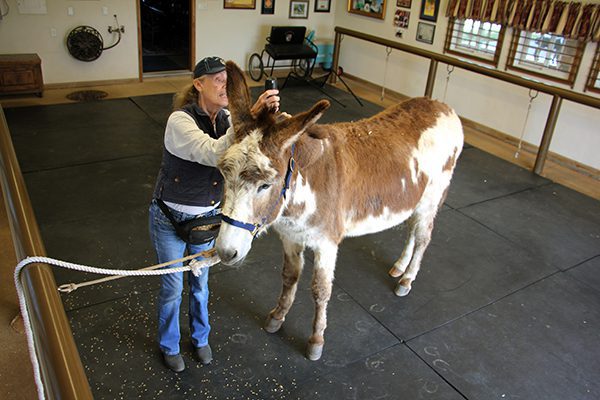
I wasn’t thrilled to have to do the workout with her feet so unbalanced, but I knew the farrier would be here the very next day, so I opted to get started. I had my Ranch manager, Chad, clean her feet.
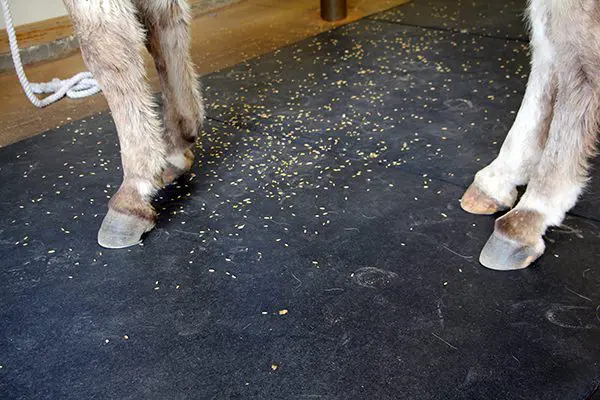
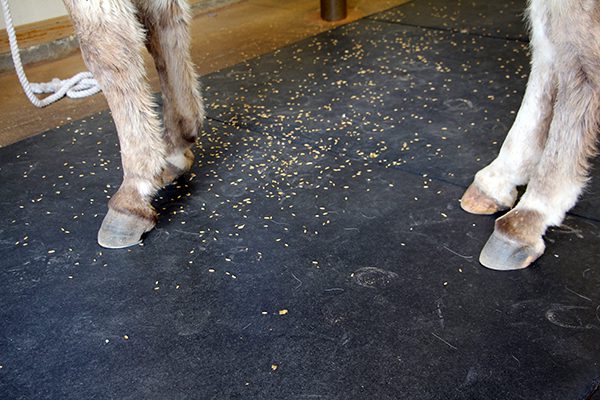
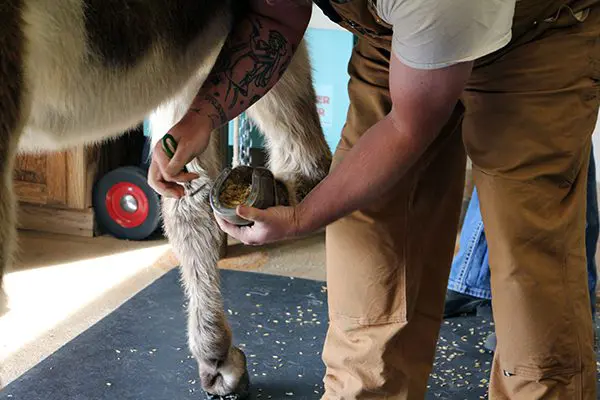
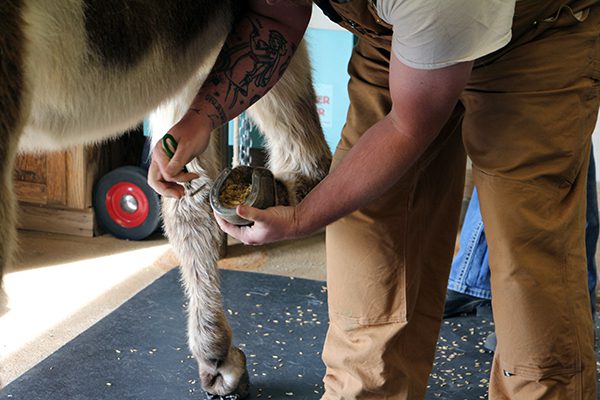
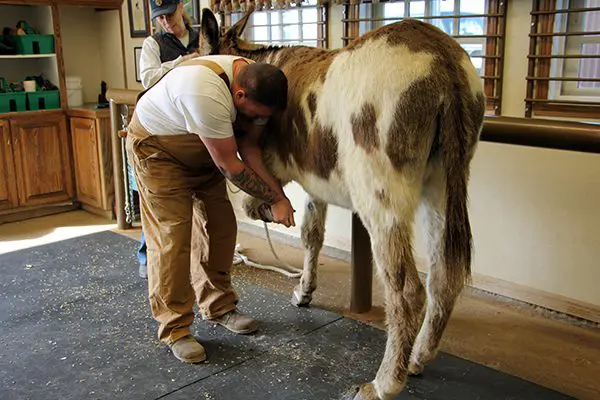
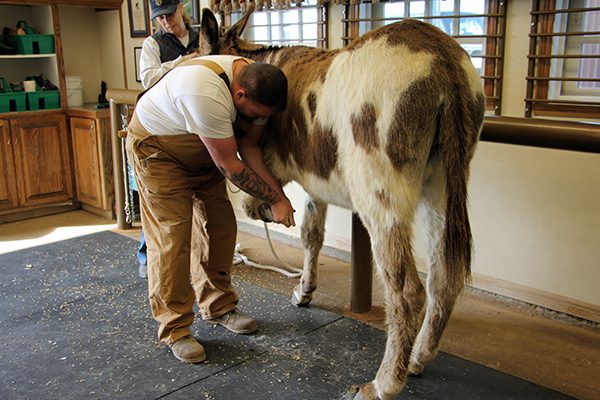
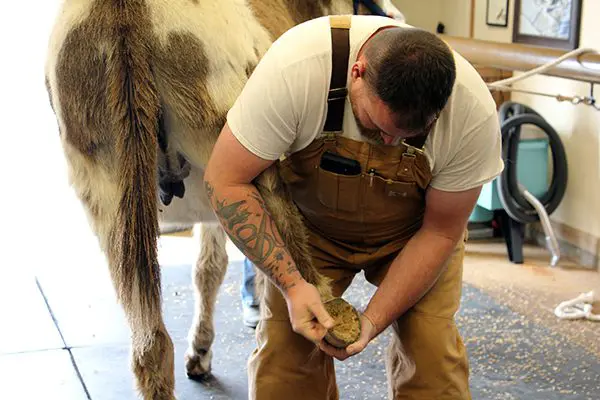
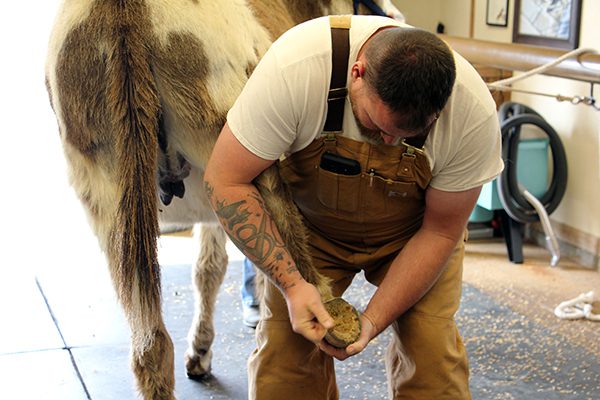
Then I proceeded to groom her with the multi-bristled human hairbrush and scrape with the shedding blade what I thought was dried milk from the insides of her hind legs.
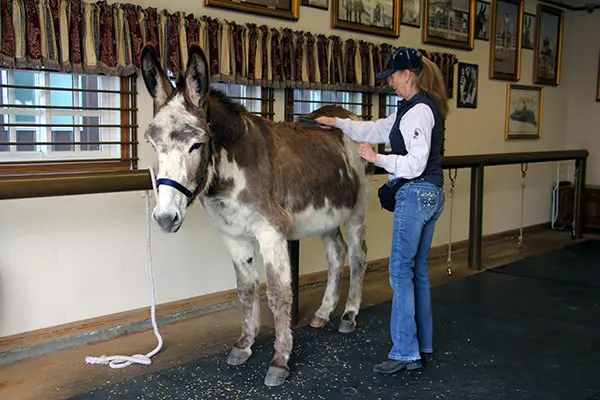
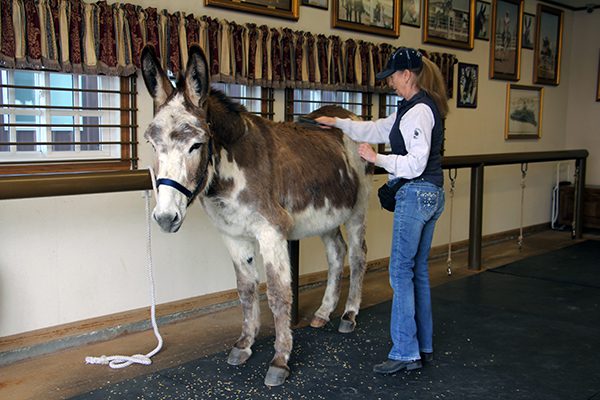
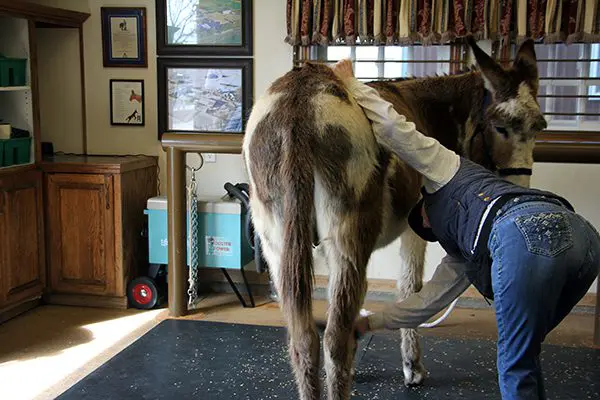
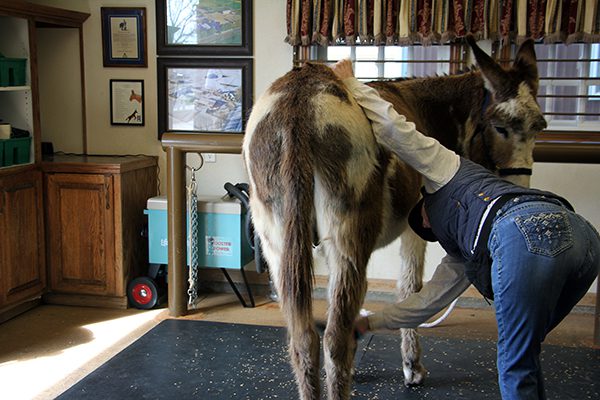
I tacked her up in a light weight surcingle, Eggbutt snaffle bridle and a neck sweat to help keep the crested neck stabilized and encourage shrinkage during the workout. Then I added and adjusted my “Elbow Pull” self-correcting, postural restraint to support good equine posture during her workout.
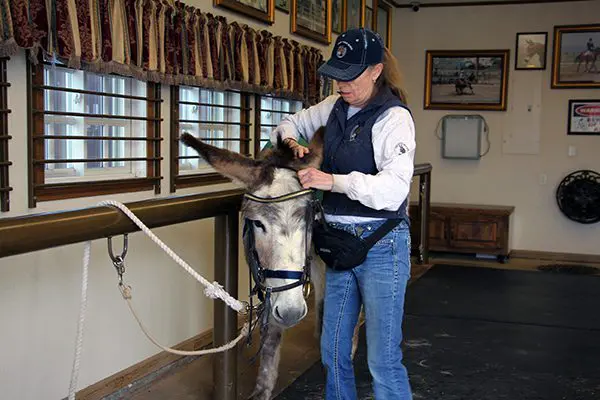
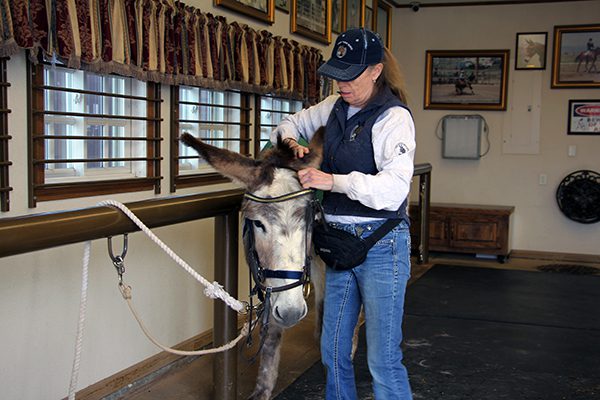
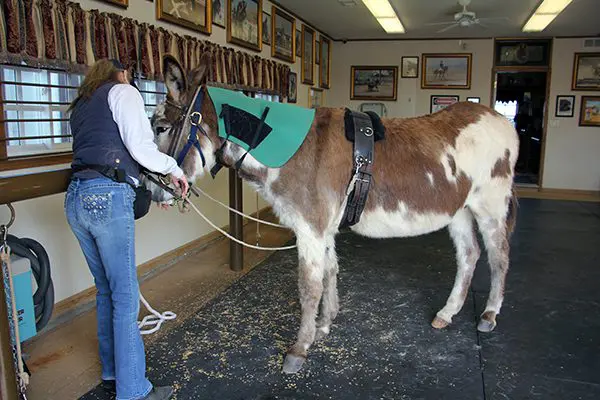
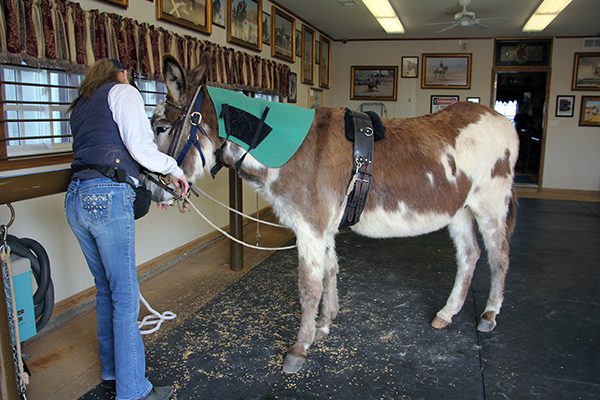
Then it was time to go to the indoor arena where I had the Hourglass Pattern with ground rails set up for her therapy sessions. She hollowed her neck and back, and “trailered” her hindquarters behind when she walked. It was the same when she stood still with an inverted neck and back and camped out behind.
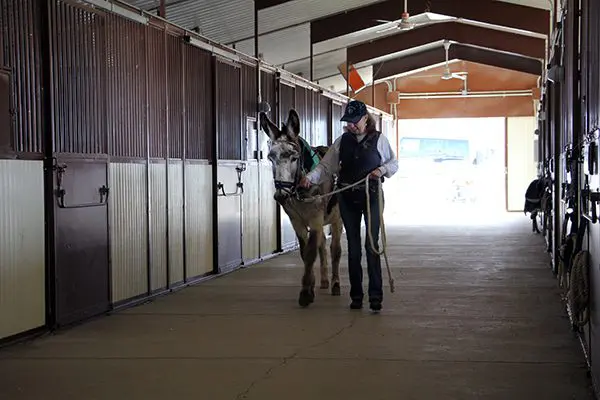
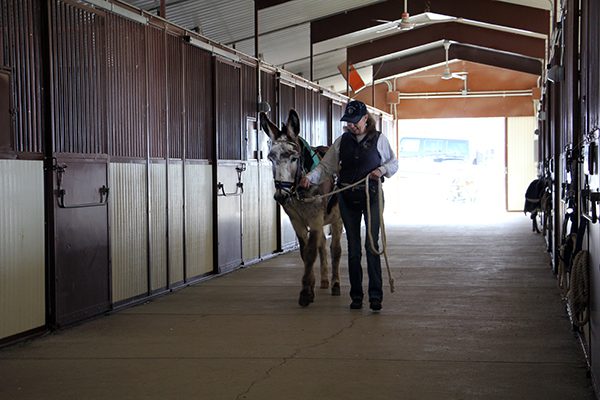
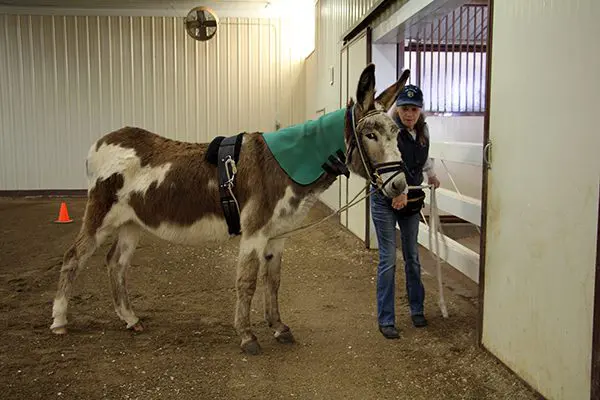
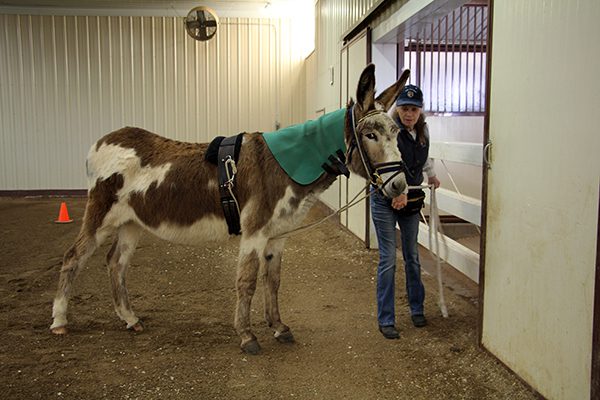
I began her postural therapy…leading her through the Hourglass Pattern in the “Elbow Pull” restraint to encourage her good posture. The neck sweat would begin to shrink the crest on her neck. She didn’t know exactly what was expected at first, but soon “got with the program” of walk and halt in designated places. She was asked to square up with equal weight over all four feet and then be rewarded for her effort. I waited each time for her to finish chewing her crimped oats before proceeding again along the track of the Hourglass Pattern.
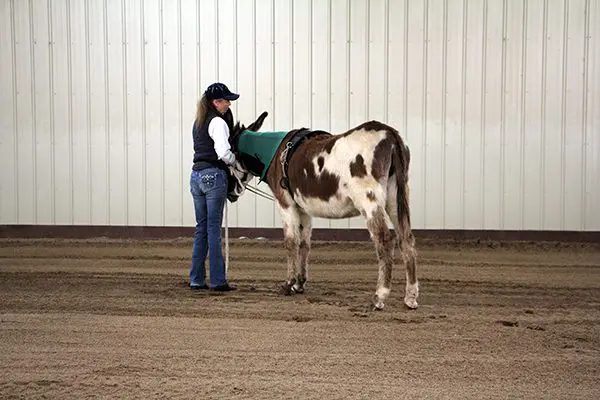
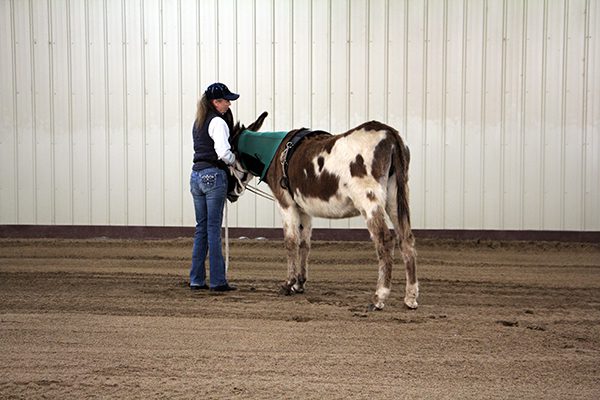
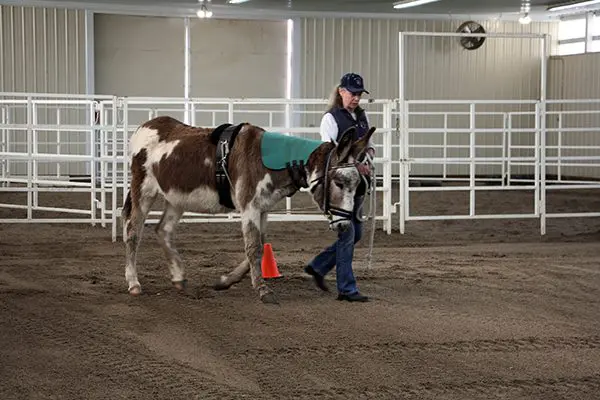
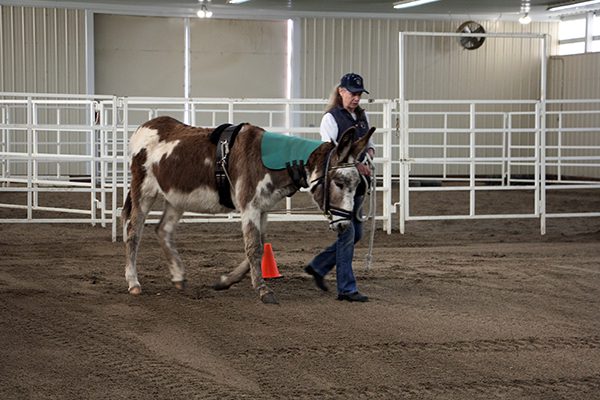
As she walked, she submitted to the pressure from the “Elbow Pull” restraint which meant she was holding her own good posture when it was loose. She would lean against it when she could not hold that posture, but I encouraged her to relax and “give” to it each time we halted.
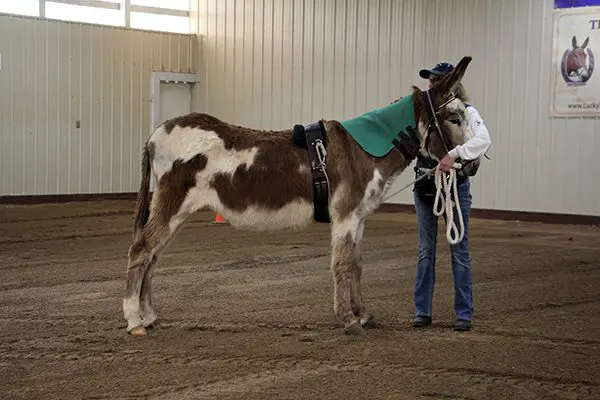
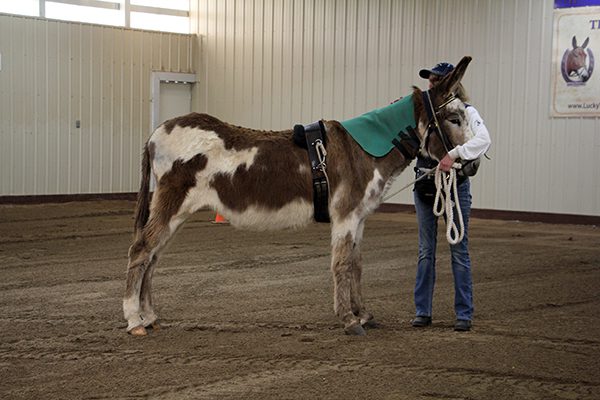
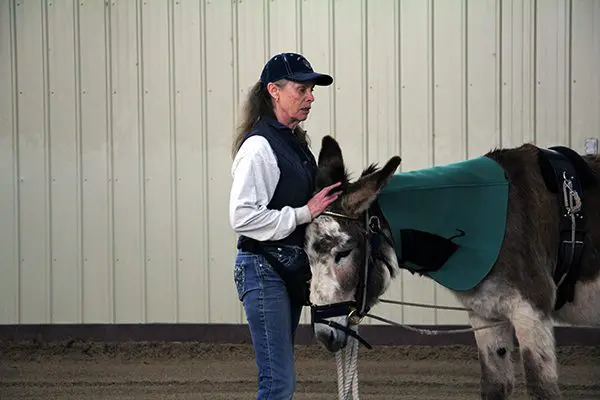
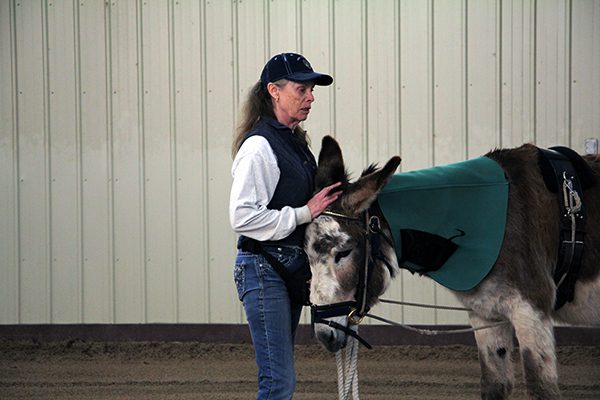
Chasity tracked once around one way and then once around the other way. She walked over the ground rails in the center of the pattern and stopped at strategic places between the cones to do square halts and stand still. I also stood still after dispensing her rewards so she would never feel rushed. She learned to stretch her back and engage her abs, and slowly began to improve even after only one session!
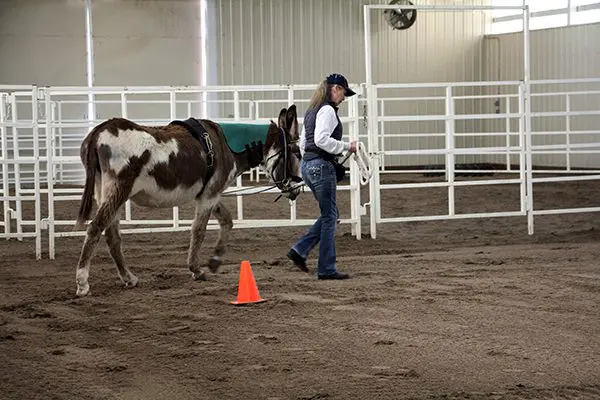
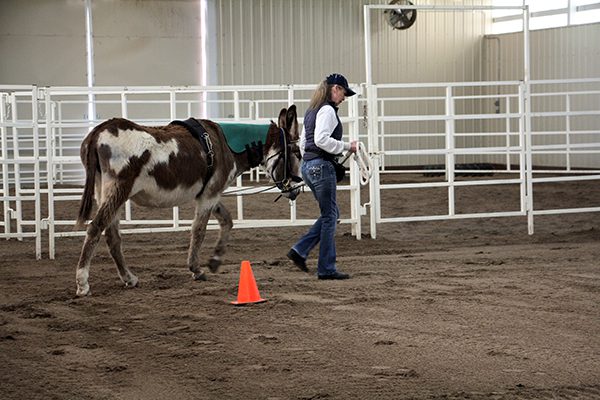
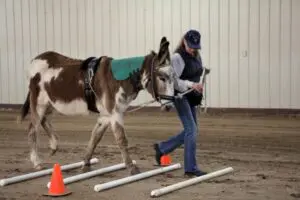

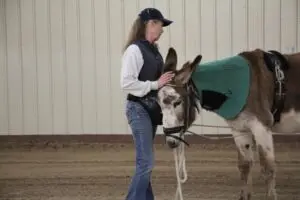

One of my ranch hands, Steve, said that he noticed her back and overall posture looked ever so slightly better when she was done, even after only one session! I think I see some very subtle improvement from the beginning to the end of the workout as well. It will take a long time to get her REALLY correct in her posture, but it is truly exciting when it begins to happen!
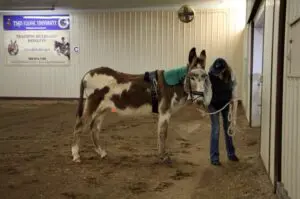
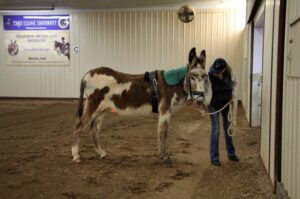
4-3-20: I went ahead and did Chasity’s therapy session in the Hourglass Pattern again. She did well in her workout and I noticed that her hair coat is already considerably softer. She had some difficulty squaring up, but it could be soreness from the previous workout. Standing squarely is unnatural for her and it will just take some time before it becomes comfortable. After having her hooves trimmed, she is moving a bit more balanced…not quite as awkwardly. Going forward, I will be doing her workouts at least once a week, but no more than every other day. Muscles need to be appropriately stressed during the workout, but not fatigued, a day of rest is needed in between to fully recover. I expect it will probably take six months before we have redistributed the fatty tissue and solidified her balance in good equine posture. I am fortunate to have such a nice indoor arena in which to work during inclement weather.
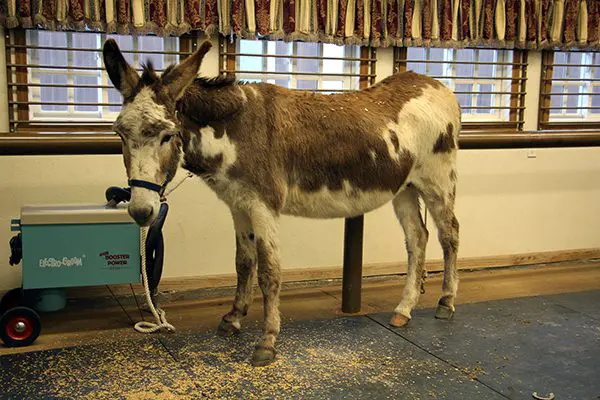
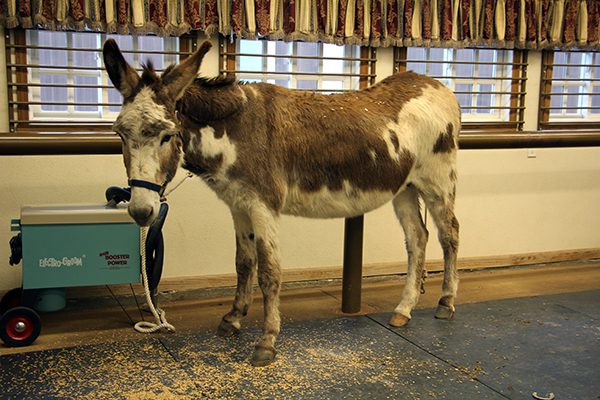
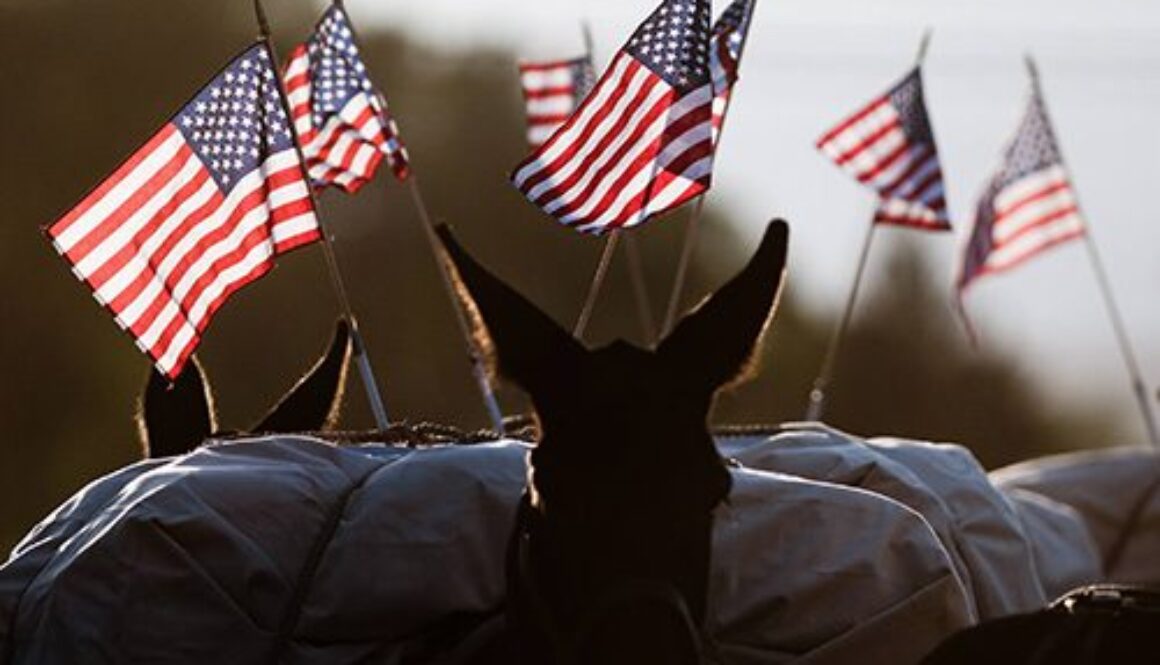

What Are Mules Good For Besides Packing and Farming? –
Learn more on Mule Talk podcast.

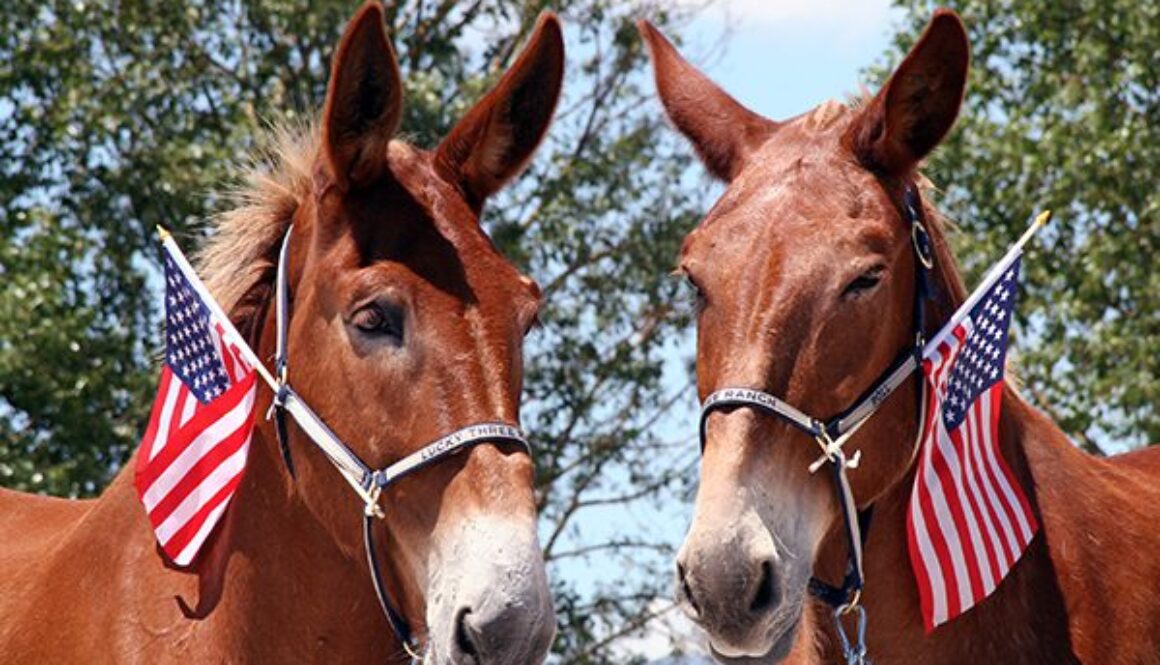
By Meredith Hodges
We have all heard the numerous negative myths about mules that abound, but have you ever thought of a mule as a hero, as an extraordinary member of our society? The mule’s history can be traced back to Biblical times, and in those days, he was known as the preferred mount of royalty. Given his ancestry, this should not be surprising. After all, is he not the offspring of the chosen mount that Jesus Christ rode into Jerusalem? As Jesus was the Son of God, so is the mule the son of the chosen donkey. And he has much to teach us about ourselves and our world—if we could only learn to observe and listen carefully to what he is telling us. The mule can be a catalyst for health, happiness and prosperity, but we must learn to do our part in appreciation of him.

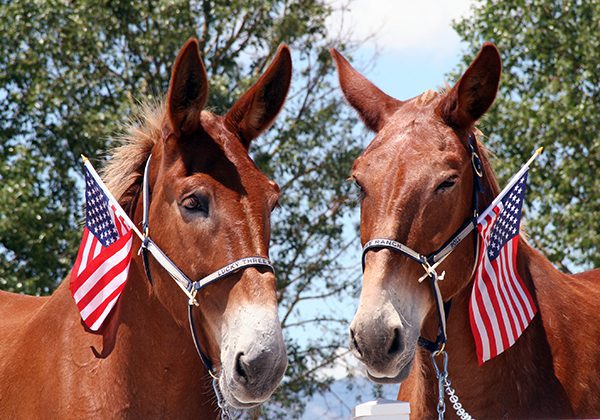
As author Melvin Bradley notes, “Democrats in mule states have always been friendly to mule-loving voters. With a farm population of 25 percent of the total, votes from mule people could make a difference.”1As presidential candidate Harry S. Truman discovered, this was politically beneficial information and he used it wisely. Finally, on May 31, 1995, Governor Mel Carnahan signed a bill designating the Missouri mule as the official state animal.
When people are open and fortunate enough to be able to engage in intimate communication with the mule, they soon discover the redeeming and heroic characteristics of the donkey (that are naturally present in the mule). The donkey is the embodiment of various moral truths, which is why he is used as an appropriate hero in numerous fables. He possesses the ability to serve without judgment of his master. He is affectionate, thoughtful and humorous and carries his burdens without complaint. We are often dismayed by the true reflection of ourselves that we are destined to see while in his presence. The donkey is a creature of wonder and augury, and glimpses of these same characteristics can be seen in the mule. Although the donkey is the symbol of the Democratic Party, his effect on people is subjective and universal, and is not restricted to just one group.
I’d like to share one of my favorite stories, illustrating the mule’s legendary endurance and great heart. According to author Walter Rickell, “When General George Custer made his campaign into the Black Hills in early 1870, Buffalo Bill led him the first day as his guide. Custer and his staff were on their finest horses brought from the east, and they were prancing and ready to go. Suddenly, Buffalo Bill appeared on his little grulla Comanche mule, Mouse. Cody paid no attention to the way the officers ridiculed him and the mule—Cody had ridden Mouse before and found he could run a good lick, but his strongest point was his endless endurance. Custer, noting it was Cody’s intention to ride the mule, called a halt and informed him it was no time for pranks, that they had to travel fast, and Mouse could never stay out of their way. Cody said nothing, touched Mouse with his spurs, and led off, the column following. By the early afternoon, in terrific heat, the horses were lathered, and Cody had to stop several times for the column to catch up. The general was surprised that, at camping time that night, Mouse was still in the lead. Custer tried to trade his fine horse for the mule. Cody rode Mouse back that night over the same trail.”2

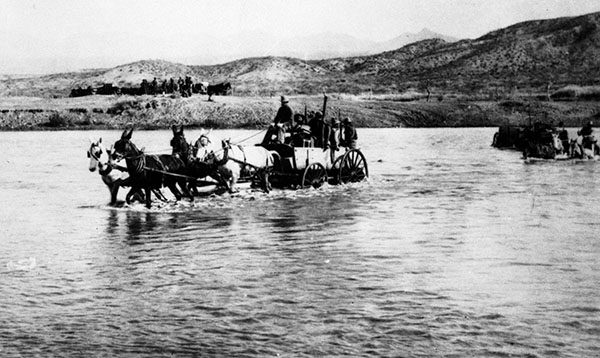

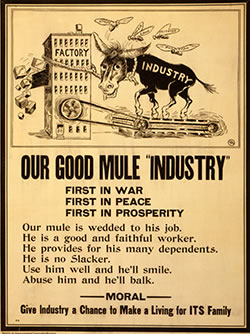
Those who work with mules know that interacting with them can keep a person healthy and happy. The typical mule person gets up early in the morning to feed and water his mules, and then goes back to his house for his own breakfast. Then it’s back to the barn to harness or saddle up and make way for the day’s activities with the mules. There is much to learn from a mule in every interaction, and if he isn’t doing what we want, then we probably haven’t asked the right way. When we do, he complies and, in the process, teaches us about real patience, love, respect and good manners. There is no more loyal friend and companion than a mule. As the old mule skinners will tell you, you either love ‘em or you hate ‘em. You either get along with them or you don’t—there’s no in between with a mule.

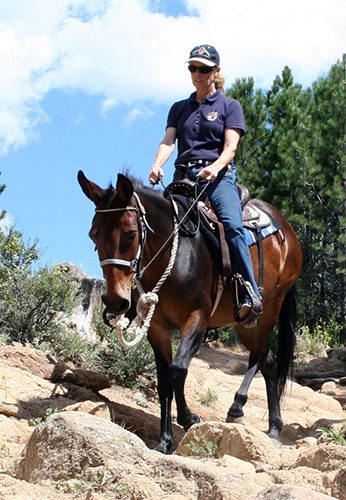
“Mule Fever” happens when you find yourself hopelessly involved with a mule…or many mules! Suddenly, there is no other equine that will do. Many people liken a mule to a dog, but dogs are unconditionally faithful and submissive, whereas the mule challenges your soul. He innocently challenges you to be the best (or worst) person you can be—more like very young children would do. You might as well be tangling with an elephant if you don’t learn how to correctly ask the mule to do what you want. Most folks end up just dangling at the end of a lead rope or hanging on for dear life during a runaway—if they are lucky enough not to get dumped on the ground and possibly stomped on or kicked! If a person finally learns what a mule has to teach, there cannot be a more reliable, intelligent and loyal friend. At the end of a day spent with mules, one is tired, but it’s a good tired. The activity has increased circulation throughout the body, making the body tired and the mind alert. This makes for a good night’s sleep, and the next day, the cycle begins again—with joy!

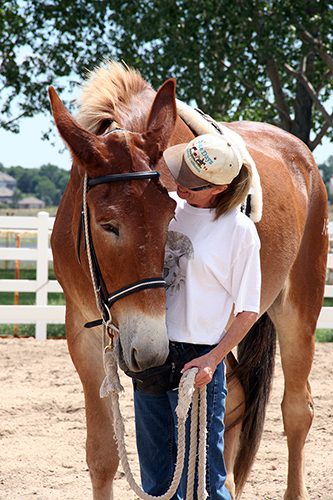
In 1985, an attempt was made by the Lynchburg Mule Trader’s Association, supported by the leadership of the Jack Daniels Distillery and U.S. Representative Jim Cooper, to designate October 26th as Mule Appreciation Day, in commemoration of George Washington’s receipt of Royal Gift, America’s first mammoth jack, from the King of Spain. Jack Daniels itself sponsored the first Mule Appreciation Day to gain publicity and support for the petition, which was passed by the House of Representatives by a substantial margin, but failed to pass in the Senate. The bill was later sent to a referral committee, where it languishes today. (Leave it to Congress to get our half-ass half-passed!) However, the spirit of mule lovers is undaunted—Mule Appreciation Day rose from the dead and has been celebrated ever since, even without the blessing of Congress. We red-blooded Americans love and appreciate our mules. Gratitude and appreciation are never outdated!
To learn more about Meredith Hodges and her comprehensive all-breed equine training program, visit LuckyThreeRanch.com, MEREDITH HODGES PUBLIC FIGURE Facebook page, or call 1-800-816-7566. Check out her children’s website at JasperTheMule.com. Also, find Meredith on Pinterest, Instagram, MeWe, YouTube and Twitter.
Covered in TRAINING MULES & DONKEY: A LOGICAL APPROACH TO TRAINING, TRAINING WITHOUT RESISTANCE, EQUUS REVISITED and A GUIDE TO RAISING & SHOWING MULES at www.luckythreeranchstore.com.
© 2011, 2012, 2014, 2016, 2024 Lucky Three Ranch, Inc. All Rights Reserved.
1The Missouri Mule: His Origin and Times, Volume II, by Melvin Bradley, Curators of the University of Missouri, page 353.
2The Misunderstood Mule, by Walter Rickell, Reproductions West, Burbank, CA, 1976.
![]()
![]()

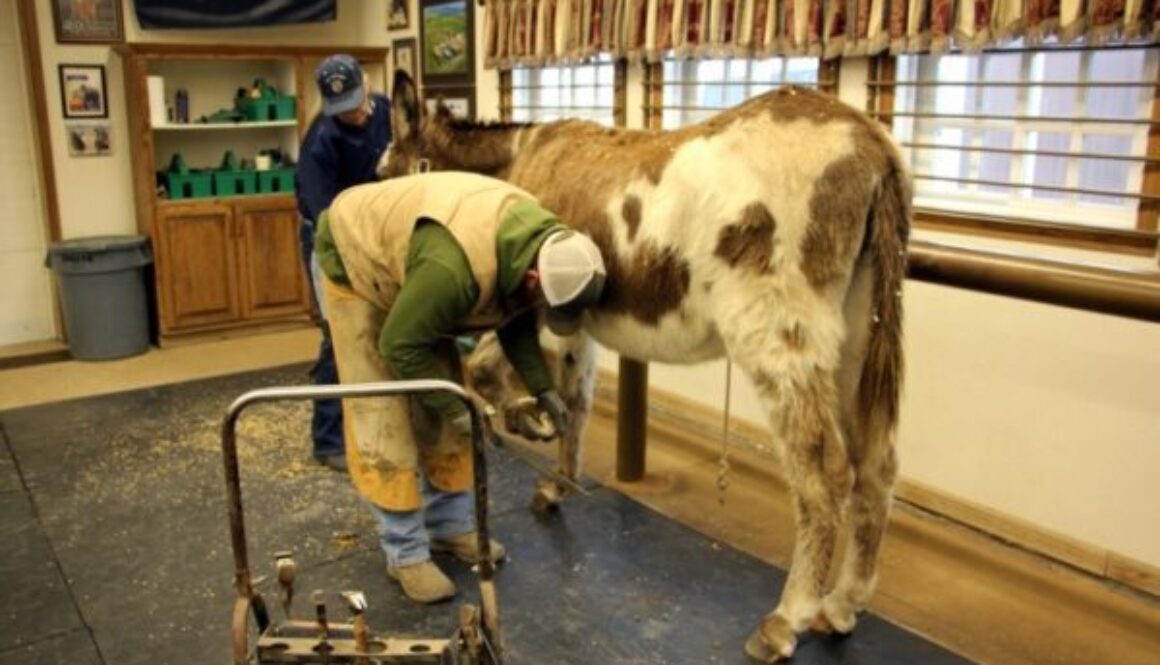
4-2-20: Our farrier, Dean Geesen came out to take care of Chasity’s feet. The first order of business was to introduce himself with an offer of oats! She did not want my veterinarian, Greg Farrand, to pick up her feet on Tuesday, but during grooming on Wednesday, Ranch Manager, Chad and I cleaned her feet, so she was much more compliant today. Getting her hooves in balance will greatly improve her overall body balance. And, getting the shoes off her overgrown front feet will enable the frog to do its circulation job!




Her front hooves were exceptionally long with Borium shoes (non-slip) on them and her back feet were long and uneven. All four feet had been trimmed out of balance.



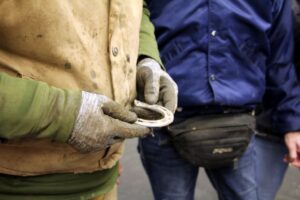
Dean showed us how the shoes had been abnormally and unevenly worn.




Dean removed the shoes and trimmed her hooves in the best balance that he could for now. Her hooves had been pressured to one side and would need several trims to get them properly symmetrical in alignment.

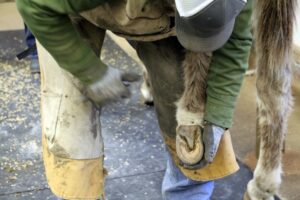
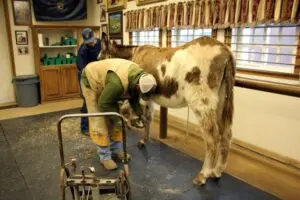

Dean is a correctional farrier and knew just what to do to get her started off on the right ‘foot’ so to speak. It was a definite improvement from where she was!




She will need to be checked periodically to keep her feet in good shape as she moves forward in her therapy. Sometimes these kinds of things just take time!




She was rewarded with oats in appreciation for her cooperation! Chasity seemed thankful for her newly balanced hooves.


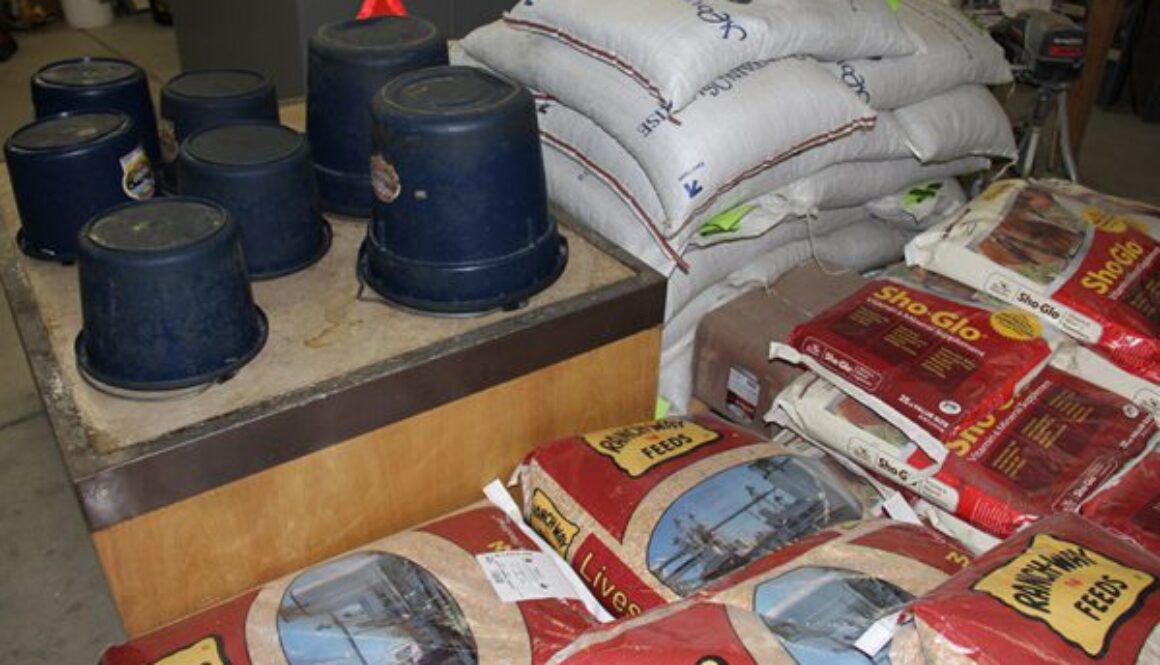

Meredith gets a lot of letters and emails from people with training questions about their equines. Here, she discusses the best way to incorporate an oats mixture into your equine’s diet.


Learn more on Mule Talk podcast.

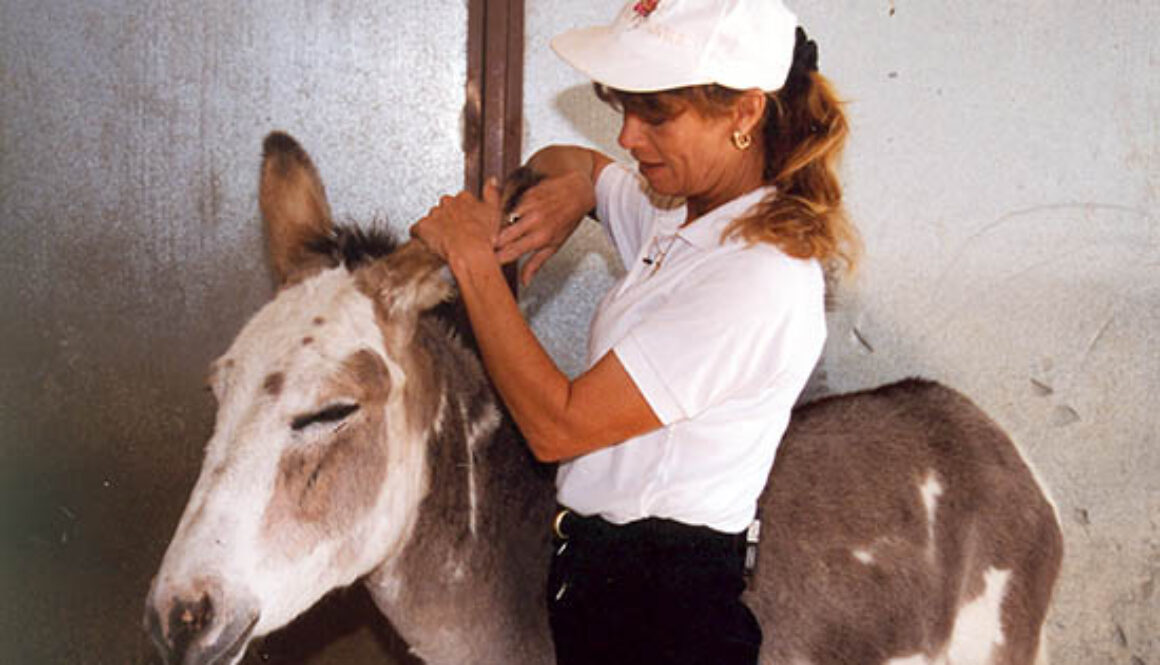
By Meredith Hodges

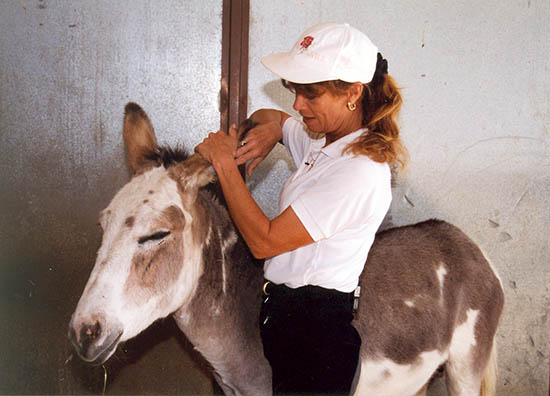
Equine foals must be allowed to play—running, kicking and rolling. This is how they exercise so they can grow up to be healthy adults. Like any baby or toddler, a foal cannot be expected to have perfect manners, so keep lessons short (10-20 minutes every other day at the most) and use good judgment when you are with him to avoid being kicked or bitten. If he does kick or bite while you are doing things with him, use the flat of your hand and give him a quick thump on the rump for kicking or on the side of his mouth for biting, accompanied by a loud “No!” He will probably run off, but should be able to be coaxed back verbally and fairly easily with soothing language and an offer of crimped oats. When he finally does come back to you, reward him with a nice pat on the neck, and then leave him to play. By doing this, you are letting him know that it is okay to play, but not to kick or bite. He has learned that bad behavior will elicit an unpleasant touch while his good behavior will illicit kind touch and soothing words. You can resume more serious corrective lessons later.

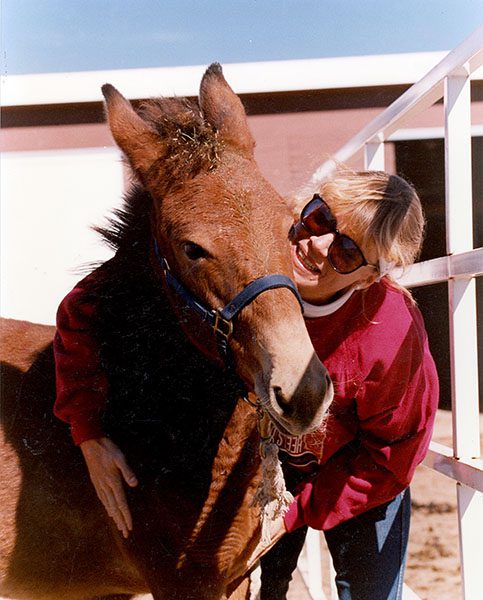
Before you begin your equine’s leading lessons—and during “tying” lessons—your equine should be rewarded frequently and whenever he is not pulling against the rope. This will help him to understand that he will be rewarded when the rope is loose so he is more likely to follow you when you do untie him and try to lead him. This concept is the same for each new task in each new lesson. Each time he easily complies, he should be rewarded. At this point you can move on to new lessons, but, in order to set him up for success, be sure to break down each process into small steps. Remember to always be generous with the rewards. An equine that learns to take the oats reward politely from your hand is less likely to bite you than one who has not had enough practice getting rewarded with the oats from your hand. When the correction for biting is done properly, your equine will learn not to be aggressive toward the reward and will learn to take them more delicately and gently from your hand.
If, as an adult, your equine gets too close or pushy, slap him on the side of the mouth with an open hand and a very loud “No!” Then put your hand up like a stop sign in front of his face. He should then step back or fling his head back, at which point you immediately step toward him and say, “Good Boy (or Girl),” and give him a reward for giving you your space. The next time he gets too close or pushy, simply put your hand up like a stop sign with a loud and abrupt “No!” This should be sufficient. Your equine should then be willing to back up and wait for the reward. You still need to be very consistent about when the rewards are given and when the correction is truly needed. “No” is the only negative verbal command you should ever give and should be the only word that ever denotes your displeasure so there is never any confusion (do not use any other negative verbal words or noises).
NOTE: Never leave a halter on an unsupervised equine. This is very dangerous! The halter can easily become snagged on something and can result in severe injury, a broken neck, or even death.
When thinking about the way horses, and particularly mules and donkeys learn, consider the way human children learn: They cannot accomplish many different tasks all at the same time. When tasks are not taught one by one and in a natural and logical order, confusion and failure are almost certainly guaranteed. If you want to have good results, you need to be working in a natural and logical order, with small enough steps that make sense to your equine. When training your mule or donkey, use a fanny pack filled with crimped oats, but do not offer a bucket of oats.
You should not even try to put on a halter and lead until your equine lets you touch him all over. Then you can approach with the halter. For instance, before you even halter your equine, ask him to come to you and then reward him with crimped oats when he does come. When he is consistently coming to you, the next step is to carry the halter with you without put it on him. Reward his approach toward you and his acceptance of the halter being present. Let him sniff and investigate the halter as much as he wants. Once he shows no sign of being at all bothered by the presence of the halter, you can then put the halter on him. When doing so, remember to always be polite and gentle. Reward your equine for the acceptance of the halter, and then try to loop your arm over his neck while feeding the crown strap of the halter from your left hand (from under his neck) to your right hand that is looped over his neck. This way, even if he starts to slowly move away, you can pull him back towards you with the loop around his neck and finish the process by putting his nose through the noseband of the halter. However, if he quickly jerks away, just let go of the rope. Then show him the oats and encourage him to return and try again, but do not give him any oats until he comes all the way back to your hand. Anytime he moves away, just ask him to return, but never chase him. Always make sure he comes all the way to you for his reward.

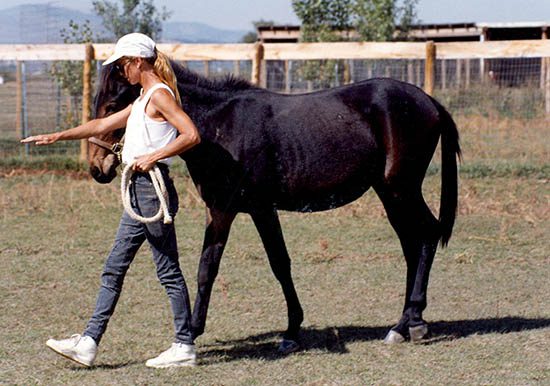
Next, turn and face the next direction in which you will be going, point with your right hand, give the command to “walk on,” and repeat the exercise. If done correctly, there will be many chances to hesitate a bit or stop between actions. All of these hesitations and stops will force your equine to pay attention and be ready for your next move. If you are performing each task in these smaller increments, he will be less likely to forge ahead. It will also give you the opportunity to do things slowly enough to get it exactly “right” and through repetition, your equine will be able to transform learned behaviors into automatic behaviors. If you try to hold a move too long or, on the other hand, do things too fast, your animal may not have time to properly comply, causing him to get confused, lose interest and engage in avoidance behavior.
You should not need to tug, pull or push. Just stand still in good posture when you stop and immediately stick your hand into the fanny pack and offer the reward. If you are doing all of this correctly, your equine might turn his head into your hand and swing his hindquarters around so that he faces you instead of stopping in his tracks. Not staying straight in his tracks is a temporary problem that you can fix by simply squaring him up after he has stopped and been rewarded. If he is forging ahead, one or more things are going on; either you are not doing things in small enough steps, not rewarding promptly enough to make him turn into you, or you are not using the fanny pack. These problems can be fixed by being more attentive to your own good posture and your movements, and to the times when he does cooperate. Keep lessons in small enough steps so he can be rewarded. This is called “setting up for success.”
You need to lead your equine with your left hand and shorten the lead rope, so he carries his head next to your right shoulder and cannot slip his head behind your back. He may try to walk ahead of you, at which point you can use your right hand to push his nose back into position. This will be very awkward at first and it will take time for you both to learn to do it properly. If he knows you are carrying a fanny pack of oats, he will be more apt to go in front of you than to follow you from behind or pass you, because he will be looking for the fanny pack. Again, use your free right hand to push him back into the correct position.
Without the reward, there is no incentive for him to do a task correctly, so always remember to dispense the reward promptly and appropriately, accompanied by a verbal “Good Boy!” whenever he correctly does what you ask. Do not spend more than 15 to 20 minutes every other day on lessons, as your animal can get bored and frustrated if you drill. At first, just practice “walk” and “halt.” When he has learned to stay at your shoulder, you can progress to the next step of halting and setting him up to stand squarely. Once he does this correctly, you can move on to trotting and turns. Remember—breaking the lessons into small steps, maintaining good posture and quickly rewarding will help your equine to achieve small victories because you are setting him up for success!
To learn more about Meredith Hodges and her comprehensive all-breed equine training program, visit LuckyThreeRanch.com, MEREDITH HODGES PUBLIC FIGURE Facebook page, or call 1-800-816-7566. Check out her children’s website at JasperTheMule.com. Also, find Meredith on Pinterest, Instagram, MeWe, YouTube and Twitter.
Covered in TRAINING MULES & DONKEY: A LOGICAL APPROACH TO TRAINING, TRAINING WITHOUT RESISTANCE and A GUIDE TO RAISING & SHOWING MULES at www.luckythreeranchstore.com.
© 2016, 2017, 2019, 2024 Lucky Three Ranch, Inc. All Rights Reserved.





The following is from All About Equine Rescue:
The month of August is going fast, and I would like to remind you of an opportunity that helps ensure a future for your family, friends, animals, and causes close to your heart. August is National Make-A-Will Month, a perfect opportunity to consider the well-being of all that you cherish.
Through AAE’s partnership with FreeWill, you can use a free online resource to create your estate plan. A recent FreeWill user said:
“They take a process that seems like a lot of work and make it quick and easy! There’s not a lot of confusing legal talk. You’ll be happy!”
Creating a will (or revocable living trust) this month can help you:
| Start My Will |
Your thoughtful estate plan can reach beyond today and help support and care for those in need when the call arises. Including a gift to AAE in your will today is a powerful way to show your dedication to our work while also ensuring that horses can be rehabilitated, rehomed, and loved for generations to come.
Join in providing a future for your loved ones and the causes you champion. Begin your will (or revocable living trust) for Make-A-Will Month today!
| Warm Regards, |
| Wendy Digiorno
Executive Director, All About Equine Animal Rescue |
P.S. If you have already included a gift to All About Equine Animal Rescue in your will, please fill out this brief form to let us know. We would love to thank you for your generosity.





The following is from All About Equine Rescue:
As a thank you for being a special member of the AAE community, we’ve extended early bird pricing for individual tickets and the Herd Table for Boots & Bling until 11:59pm on Friday, August 16!
That’s an extra 24 hours for extra savings! Don’t wait – This will be your last chance to save!


This evening of family fun will feature a BBQ dinner catered by prize-winning Cowabunga BBQ. The menu includes full-of-flavor meats and sides. Fan favorite Justin Trick of Trick Auctioneers is also returning this year to emcee the night alongside Tamara Berg of KCRA.
“I have had their delicious food on a few occasions and they are a for sure standout in the BBQ catering space. The meats are cooked to perfection and if that wasn’t enough… the sides, omg are friggen awesome!”
· Reviewer of Cowabunga BBQ
This year’s event is extra special because we are celebrating 15 successful years of working on the frontlines of equine rescue together! To commemorate this milestone, there will be some fun contests and prizes. There will also be auctions with some amazing items and scrumptious desserts, dancing, and more that you won’t want to miss!
Boots & Bling is AAE’s most important fundraising event of the year. The horses are counting on you to be there!
Once on the event website, click on the red “Donate & Tickets” button to purchase your tickets.
Coming with friends? Purchase tickets for your group in one transaction.
Early Bird pricing for the Herd Table has been extended!
The Herd Table sponsorship is our most popular and most economical option. This table for 12 is perfect for a group of family, friends, co-workers, or fellow volunteers!
Early bird savings available until Friday, August 16 at 11:59pm.
The following is from Chilly Pepper – Miracle Mustang:







One of our amazing donors stepped up to offer MATCHING FUNDS OF $2500 to wrap this up. PTL!!
Any donations made after midnight Saturday night will be matched, UP TO $2500
As of this morning we have $ 110 towards the matching funds.
Thank you everyone for coming together to make this save possible. Y’all Rock!
Let’s get those matching funds and bring these Mustangs Home!
You, my Chilly Pepper Family, have been saving lives for well over Sixteen years!
THANK YOU, MY CHILLY PEPPER FAMILY, FOR ALWAYS BEING THERE! YOU ROCK!!!
You can donate to Goldendale Veterinary – 509-773-0369
You can donate to Zimmerman Vet – 775-623-0981
NEW – DONATE WITH ZELLE
Send Money with Zelle®
Wildhorses In Need
530-339-1458
New Venmo – @WIN-dba-ChillyPepper
New CashAp – $ChillyPepperMM
(Win dba Chilly Pepper)
THANK YOU, ALL OF YOU, FOR BEING SO AMAZING FOR THESE PRECIOUS SOULS! YOU are the reason so many lives are saved!
I appreciate every single one of our Chilly Pepper Family. God has truly blessed this rescue!
IF YOU WOULD LIKE TO KEEP HELPING US SAVE MORE LIVES, YOU CAN GO TO:
You can go to gofundme<-
You can go to Paypal<-
PLEASE NOTE – Paypal shows Wild Horses in Need, as we are dba- Chilly Pepper
if you would like to help these horses.
->You can donate via check at:
PLEASE NOTE NEW ADDRESS FOR CHECKS*
(For now while I’m at Camp Chilly Pepper)
Chilly Pepper
19 Weona Rd
Goldendale, WA 98620
You can also donate via credit card by calling Palomino at 530-339-1458.
Venmo – @WIN-dba-ChillyPepper
NO MATTER HOW BIG OR HOW SMALL – WE SAVE THEM ALL!
SAVING GOD’S CRITTERS – FOUR FEET AT A TIME
Chilly Pepper – Miracle Mustang, WIN Project – Rescue & Rehab
We are now part of the WIN Organization
WIN (WILD HORSES IN NEED) is a 501c3 IRS EIN 55-0882407_
If there are ever funds left over from the cost of the rescue itself, the monies are used to feed, vet, care for and provide shelter and proper fencing for the animals once they are saved.
The following is from Chilly Pepper – Miracle Mustang:






At this point we have raised a little over $1000
We need at least another $4500 to say YES!
I have to be able to feed, care and vet these horses before I commit.
These horses will be available for adoption once they have been assessed and settled in.
As many of you know, there are multiple “rescues” who have been raising tons of money, supposedly “saving” the horses, and are in trouble with the law for letting them starve, or the horses have disappeared, back to the slaughter pipeline.
It is necessary to raise the appropriate funds to be able to care for them. I work for free.
This is a labor of love, and we CANNOT DO IT WITHOUT YOUR HELP!
I won’t choose one and leave the others behind.
PLEASE HELP TODAY!
You, my Chilly Pepper Family, have been saving lives for well over Sixteen years!
THANK YOU, MY CHILLY PEPPER FAMILY, FOR ALWAYS BEING THERE! YOU ROCK!!!
You can donate to Goldendale Veterinary – 509-773-0369
You can donate to Zimmerman Vet – 775-623-0981
NEW – DONATE WITH ZELLE
Send Money with Zelle®
Wildhorses In Need
530-339-1458
New Venmo – @WIN-dba-ChillyPepper
New CashAp – $ChillyPepperMM
(Win dba Chilly Pepper)
THANK YOU, ALL OF YOU, FOR BEING SO AMAZING FOR THESE PRECIOUS SOULS! YOU are the reason so many lives are saved!
I appreciate every single one of our Chilly Pepper Family. God has truly blessed this rescue!
IF YOU WOULD LIKE TO KEEP HELPING US SAVE MORE LIVES, YOU CAN GO TO:
You can go to gofundme<-
You can go to Paypal<-
PLEASE NOTE – Paypal shows Wild Horses in Need, as we are dba- Chilly Pepper
if you would like to help these horses.
->You can donate via check at:
PLEASE NOTE NEW ADDRESS FOR CHECKS*
(For now while I’m at Camp Chilly Pepper)
Chilly Pepper
19 Weona Rd
Goldendale, WA 98620
You can also donate via credit card by calling Palomino at 530-339-1458.
Venmo – @WIN-dba-ChillyPepper
NO MATTER HOW BIG OR HOW SMALL – WE SAVE THEM ALL!
SAVING GOD’S CRITTERS – FOUR FEET AT A TIME
Chilly Pepper – Miracle Mustang, WIN Project – Rescue & Rehab
We are now part of the WIN Organization
WIN (WILD HORSES IN NEED) is a 501c3 IRS EIN 55-0882407_
If there are ever funds left over from the cost of the rescue itself, the monies are used to feed, vet, care for and provide shelter and proper fencing for the animals once they are saved.
The following is from Chilly Pepper – Miracle Mustang:







I was told these mustangs came from the same area that WARRIOR did. This could be his DAD or BROTHER?
The photo above shows how they comfort each other as they wait for an unknown future. I was told they are extremely reactive and need a safe place with someone who knows what they need.
It is a rare opportunity to get them before they end up in the Kill pen. There is a stallion, 2 mares that are “covered”, and a yearling colt.
So in all reality, you are saving SIX lives!
Look at these beautiful faces. This is THEIR 911!! Please help me save them.
These are NV mustangs, and are set to ship to slaughter.
We need $3500 for bail and transport. We need an additional $4000 plus for the vet bills, hay and feed for the next few months. Our current “special needs” kids also need more grain and special feed. We actually FEED and provide Medical Care for the horses we rescue.
So many rescues are shutting down, or heading that way. It takes all my faith to say yes to taking on more horses we most likely will have to feed this winter. Please make this another successful rescue!
You, my Chilly Pepper Family, have been saving lives for well over Sixteen years!
THANK YOU, MY CHILLY PEPPER FAMILY, FOR ALWAYS BEING THERE! YOU ROCK!!!
You can donate to Goldendale Veterinary – 509-773-0369
You can donate to Zimmerman Vet – 775-623-0981
NEW – DONATE WITH ZELLE
Send Money with Zelle®
Wildhorses In Need
530-339-1458
New Venmo – @WIN-dba-ChillyPepper
New CashAp – $ChillyPepperMM
(Win dba Chilly Pepper)
THANK YOU, ALL OF YOU, FOR BEING SO AMAZING FOR THESE PRECIOUS SOULS! YOU are the reason so many lives are saved!
I appreciate every single one of our Chilly Pepper Family. God has truly blessed this rescue!
IF YOU WOULD LIKE TO KEEP HELPING US SAVE MORE LIVES, YOU CAN GO TO:
You can go to gofundme<-
You can go to Paypal<-
PLEASE NOTE – Paypal shows Wild Horses in Need, as we are dba- Chilly Pepper
if you would like to help these horses.
->You can donate via check at:
PLEASE NOTE NEW ADDRESS FOR CHECKS*
(For now while I’m at Camp Chilly Pepper)
Chilly Pepper
19 Weona Rd
Goldendale, WA 98620
You can also donate via credit card by calling Palomino at 530-339-1458.
Venmo – @WIN-dba-ChillyPepper
NO MATTER HOW BIG OR HOW SMALL – WE SAVE THEM ALL!
SAVING GOD’S CRITTERS – FOUR FEET AT A TIME
Chilly Pepper – Miracle Mustang, WIN Project – Rescue & Rehab
We are now part of the WIN Organization
WIN (WILD HORSES IN NEED) is a 501c3 IRS EIN 55-0882407_
If there are ever funds left over from the cost of the rescue itself, the monies are used to feed, vet, care for and provide shelter and proper fencing for the animals once they are saved.
The following is from the American Wild Horse Campaign:
We are at a crossroads in our fight to protect America’s wild horses. This week, the U.S. District Court for the District of Wyoming ruled on our legal case giving the Bureau of Land Management (BLM) the green light to remove nearly 5,000 Wyoming wild horses and destroy 2.1 million acres of their habitat. But this is not the end of the story — it’s a call to action.
| FUEL OUR LEGAL FUND |
This outcome was not unexpected and we will appeal it to the Tenth Circuit Court of Appeals. We knew from the start that this issue would ultimately be decided by the appellate court, regardless of which side prevailed at the lower court.
We’ve won important cases at this appellate court before that show the BLM doesn’t have the power to remove wild horses from public lands just because landowners want them off their private property. And we’re not backing down now. Can you donate right now to fuel our legal team and ensure we have the resources to see this case through the Appellate Court process?


Photo Credit: Kimerlee Curyl Photography
I’ve been working with the attorneys, fighting for Wyoming’s wild horses for over a decade. I’ve visited these herds, I’ve seen how magnificent these wild horses are. I know that if we stand by, this ruling could give the BLM unprecedented power to erase Herd Management Areas, threatening the very existence of not only the Salt Wells Creek and Great Divide Basin herds, but also other wild horse herds across the West. But if we act now, we have a chance to preserve these lands and protect the wild horses who call them home. That’s why today, we filed a Notice of Appeal, making it clear to the BLM that we will not back down.
| FUEL OUR LEGAL FUND |
This is a pivotal moment in our 12-year fight for these incredible animals. We cannot allow the livestock industry’s demands for eradication of the iconic Salt Wells Creek and Great Divide Basin wild herds to prevail. I hope you stand with me as we once again take this fight to the Tenth Circuit Court of Appeals.
Onward, together,
Suzanne Roy
Executive Director
American Wild Horse Conservation